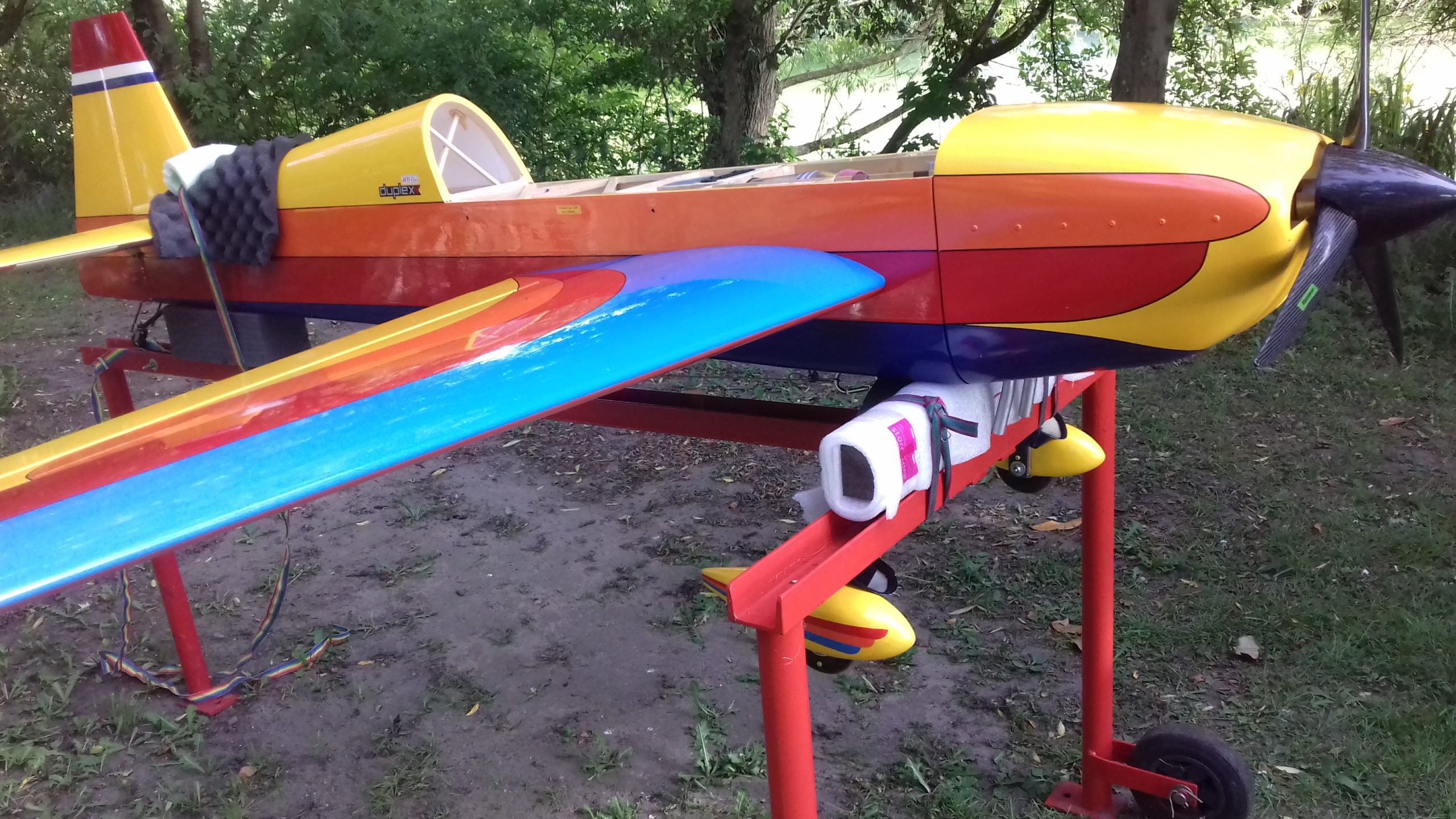



A long time ago I started to silence the Carden, and today I managed to obtain some very good numbers. The weather was nice, the wind was calm, and I was off for the day. So, all ingredients were present to make it all happen. At the club we have built a heavy support on which to mount the plane to be tested. In the past I had tested this setup and had found that the power produced was enough to move and tip over this contraption. So, the largest part of the measurement session consisted of securing everything with spikes in the ground, etc. The plane itself is firmly strapped in place, I have an additional (temporary) anchoring point on the u/c, tied to the frame. I do not fancy the idea of something going flying at full power. Anyways, all went well. At 25 meters/ 90 degrees downwind, according to the prescribed setup I measured 77dB, which is NotBad! The 45/135 degrees measuring stations also showed 77dB (tad less) and the one to the back of the plane only 56 dB. In all instances the exhausts are plainly visible to the dB meter. I had noticed in the past that the sound at the back and front of the plane is a lot less than you would expect. Which tells me I guess that most noise is produced by the prop-tips. The only thing I still need to worry about at some time is that in this test situation, the cylinder temps go a lot higher than when flying, even though nothing is blocked. Just goes to prove that just propeller wind is not the same as the airflow generated by flying. This is also the reason I had to wait for a cooler day, because initially I saw temps up to 180C! Now, with a modified hole at the bottom of the cowl, it’s only 150C max. (In flight I see 130C max today. And yes, it is the left cylinder that is always warmer. Seams to be a feature of twins. Maybe one day I’ll try to add more ‘cool’ to that side. (or squeeze the other side, to make it a bit higher .) As someone said: too much info, just fly!!
.) As someone said: too much info, just fly!!

